About the Kreisau Circle
The 'Kreisau Circle' (Kreisauer Kreis) occupies an exceptional place among the German opposition against the Nazi regime. This group, when compared to other anti-Nazi organisations was uncommonly heterogeneous. It was composed of intellectuals, civil servants, social activists and clergymen representing very different political and world-view options. These people, acting across the divide, developed an original political, social, economic and cultural programme for post-war Germany and Europe. One important part of this programme was the idea of strict cooperation of European nations within the framework of a politically united continent.
The Kreisau Circle was founded in 1940 as a network of contacts centred around two initiators: Helmuth James von Moltke, the owner of the estate in Krzyżowa in Lower Silesia, and Peter Yorck von Wartenburg. The group did not have a coherent structure, or even a name (Later, it would be the Gestapo that referred to them as the “Kreisau Circle”). However, it brought together a wide range of representatives from different backgrounds and world-view options, who, unable to come to terms with the situation in Germany - as well as the actions of the German army in Europe - decided to stand against Adolf Hitler’s regime.
Members of the group were aware that they did not have at their disposal the resources nor capacity to carry out an assassination attempt on the leaders of the regime, even less so, to stage an armed coup. They believed that the military solution could only take real shape with the participation of the military themselves. Therefore, they dedicated themselves to the development of a political programme for the post-war Germany. They believed that the military defeat of the Nazis was inevitable, and change in the country would then be possible, primarily owing to activities undertaken from within.
They held hundreds of meetings which, for fear of arousing interest of the security services, could only be attended by no more than a few people at a time. They met as a larger group only three times. And it was, in fact, at the estate of the von Moltke family in Krzyżowa, where these meetings took place. Throughout this time they developed a plan for the constitution of a future, democratic Germany. They also prepared concepts regarding the punishment of war criminals and compensation for those countries attacked and occupied by the Nazi Germany. They also thought about the shape of a future united Europe, which would prevent any further conflicts from breaking out.
The representatives of the Kreisau Circle established contact with representatives of opposition groups in occupied Belgium, the Netherlands and Norway and also made ineffective attempts at gaining support from the Allies.
Nine members of the Kreisau Circle were sentenced to death for their opposition activities and future involvement in the coup d’ etat on Adolf Hitler prepared by Claus Stauffenberg (20 July 1944). The sentence was executed on eight of them, including Helmuth James von Moltke and Peter Yorck von Wartenburg.
Three meetings in Krzyżowa
The members of the Kreisau Circle, for fear of arousing the interest of the security services (some of them were already being observed by the Gestapo) met primarily in smaller groups consisting of two, three or four people. After two years of such intensive work, they met three times as a larger group - at the estate owned by Helmuth James von Moltke, in Krzyżowa, Lower Silesia. This was an important step for the organisation which, thanks to these meetings, could create one whole from the number of individual concepts developed.
The first meeting in Krzyżowa - 22nd to 25th of May, 1942
The first meeting in Krzyżowa was held between 22-25 May 1942, on Pentecost (the date was chosen because they supposed that the vigilance of the security services would be lower). The following people met for the first time in larger company: Helmuth and Freya von Moltke, Peter and Marion Yorck von Wartenburg, Theodor Steltzer, Augustin Rösch, Hans Peters, Adolf Reichwein, Harald Poelchau, Hans Lukaschek, Asta von Moltke (Helmuth’s sister) and Irene Yorck von Wartenburg (Peter’s sister).
For fear of being uncovered, discussions concerned issues which did not have a clearly political context. These included: the role of Christianity in society, relations between the state and the Church, and problems related to upbringing, secondary education and universities.
The caution exercised in the choice of topics and the date of the meeting was the main reason why the Gestapo never found out about this first meeting even after the Circle was broken up in 1944.
The first meeting in Krzyżowa was of fundamental significance for the further activities of the group brought together around Moltke and Yorck. It became an impulse for more intensive work on the preparation of the programme for a future democratic Germany. The location of the three large meetings at von Moltke’s estate led the Gestapo to refer to the group as the “Kreisau Circle” as early as during the investigation they conducted in the year 1944.
The second meeting in Krzyżowa- 16th to 18th of October, 1942
The second meeting of the Kreisau Circle at von Moltke's family estate was held soon after the first, that is, between 16-18 October 1942. The success with which the first meeting ended, in the general opinion of the members of the Circle, certainly encouraged them to undertake work on the creation of a programme for the future post-war Germany.
The number of people invited to Krzyżowa was extended. In addition to several people who had participated in the first meeting - Helmuth James and Freya von Moltke, Peter and Marion Yorck von Wartenburg, Theodor Steltzer and Hans Peters – new participants, representing broader circles attended: theologian Eugen Gerstenmaier, Jesuit Father Alfred Delp, the economist Horst von Einsiedel and members of the Social Democratic Party in Germany; Theodor Haubach and Hermann Maass.
Above all, the discussions during the second meeting were related to issues of crucial importance for the future post-Nazi Germany as well as issues that were extremely dangerous in the event of exposure. Projects regarding the reconstruction of the civic society and the political shape of the state and economy were prepared.
These issues were not accidental. The members of the Kreisau Circle drew conclusions from the not-so-distant German past and wished to organise the new state in such a way as to prevent the breaking up of democratic structures, the weakening of civic responsibility for the country and the economic collapse that would only intensify it. They were clearly aware that these were factors which were of key importance in the Nazis’ rise to power.
The second meeting in Krzyżowa was a turning point for the further fate of this group. It was then that the further directions of future activity were set.
From today's perspective, we cannot underestimate the efforts made at that time to shape society and the structures of the state in such a way as to ensure that extremist groups never again seize power.
The third meeting in Krzyżowa - 12th to 14th of June, 1943
The third meeting of the Kreisau Circle in the estate of the von Moltke family took place between 12-14 June 1943 - and, just as was the case of the other meeting, the pretext for it was the Pentecost.
It was attended by: Helmuth James and Freya von Moltke, Peter, Marion and Irene von Yorck, Adam von Trott zu Solz, Eugene Gerstenmeier, Hermann Maass and Father Alfred Delp.
It was held after a longer break and in a new external situation, which was not without any impact on the topics of discussions. The defeat of the German army near Stalingrad (February 1943), which indicated the inevitability of the collapse of the Eastern Front, made the members of the Circle look at the future fate of Germany from a different perspective.
Therefore, the main emphasis during the meeting was placed on foreign policy (including policies towards the Allies occupying Germany), the post-war economic policy and - for the first time so explicitly – the rules of prosecution for the crimes committed by the Germans.
From today's perspective, particular attention is drawn by the issue of punishment for Nazi criminals touched upon at that time. The members of the Kreisau Circle clearly advocated that the Germans themselves must settle the crimes which they committed - as only in such a case would it be possible to build a truly democratic civic society.
Aware of the crimes which the Germans had committed against Jews, Poles and other nations of the occupied Europe, they considered it necessary to set about punishing all those who had acted against human rights with the utmost firmness and severity - without the possibility of hiding behind orders or national laws in force at that time.
The third meeting in Krzyżowa was at the same time the last one which the members of the Circle held in the family estate of the von Moltke family. The current duties absorbed the members of the Circle to such an extent that they decided to organise the next meeting in a larger company.
In January 1944 Helmuth James von Moltke was arrested and, because of this, the group decided to adopt a complete different model of operation.
Krzyżowa, however, remained forever a place associated with a group whose members had the courage to oppose evil despite the consequences they would face.
MEMBERS
The Kreisau Circle consisted of a group of people belonging to a strict core and a number of smaller working groups. The members of the inner Circle were as follows:
ALFRED DELP
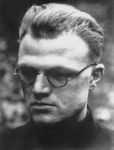
Alfred Delp (born on 15 September 1907 in Mannheim, died on 2 February 1945 in Berlin) – Jesuit, theologian, German opposition activist.
Alfred Delp was born as the oldest son out of six children in a family of mixed religions in Mannheim. When he was fourteen years old, he chose the Catholic religion. In the years 1922-1926 he was involved in cooperation with the Bishop’s boarding school in Dieburg, working at the same time for the New Germany Association (Bund Neudeutschland). In the years 1928-1931, after his novitiate into the Jesuit order, he studied philosophy. After completing these studies, Delp became a tutor of young people at the boarding school of the Jesuit College in Feldkirch. He held this post until 1934 to become a prefect at the College of St. Blasien. From 1934, he studied theology, and in the year 1937, he was ordained a priest. In the years 1939-1941, he was the editor of an influential Catholic magazine ”Stimmen der Zeit". After the publication of further issues was banned, he became the rector of the filial church of St. George in München-Bogenhausen.
Through the inspiration of Augustin Rösch, in the years 1942-1943, Alfred Delp began to work intensively in the Kreisau Circle. As a specialist in the field, he brought elements of Catholic social teaching to the plans for a new order created by the conspirators. Delp participated in the second and third congresses in Krzyżowa. He also tried to provide help to Jewish circles. For the needs of the Circle, he prepared materials dedicated to workers’ and peasants’ issues. On 28 July 1944, he was arrested in Munich, and on 11 January 1945, the so called People's Court (German Volksgerichtshof) sentenced him to death. The verdict was executed on 2 February 1945 in Berlin-Plötzensee.
HORST VON EINSIEDEL

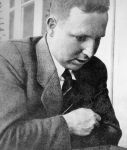
Horst von Einsiedel (born on 7 June 1905 in Dresden, died on 25 February 1947 in the Sachsenhausen camp) – German lawyer and economist.
Horst von Einsiedel was born as the second son in the marriage of a couple of doctors from Dresden. In the 1920s, he studied law and political science at Wrocław University. Having passed the referendary's exam in 1930 he joined the SPD (German Social Democratic Party). In 1934 he took up a post at the Reich’s Statistical Office in Berlin, which he soon had to leave for political reasons. After dismissal, he worked in the Reich’s Chemistry Office. At that time that one of his closest friends was Otto Heinrich von der Gablentz. From 1940 Einsiedel was a member of the Kreisau Circle and had close ties with Carl Dietrich von Troth – he had known him previously from the times of their joint social activities in the so called Löwenberger Arbeitsgemeinschaft.
As part of his activities in the Kreisau Circle, he worked together with Moltke and Peter von Yorck, on problems related to fundamental economic-political issues, while from 1942 onwards, he focused mostly on issues related to the agricultural policy. He took part in the second and third congress in Krzyżowa and together with Carl Dietrich von Troth, had a great impact on the economic-political discussions in the Circle. After the assassination attempt on 20 July 1944, by a lucky coincidence, Horst von Einsiedel was able to live in hiding in Berlin until the end of the war.
In August 1945, he took charge of a department in the economic administration offices of the Berlin City Council, but as early as in October the same year he was arrested by the Soviet secret police. He died on 25 February 1947 under inexplicable circumstances in the Soviet internment camp in Sachsenhausen.
OTTO HEINRICH VON DER GABLENTZ

 Otto Heinrich von der Gablentz (born on 11 September 1898 in Berlin, died on 27 April 1972 in Berlin), German political scientist. After the war, professor at Freie Universität Berlin.
Otto Heinrich von der Gablentz (born on 11 September 1898 in Berlin, died on 27 April 1972 in Berlin), German political scientist. After the war, professor at Freie Universität Berlin.
Otto Heinrich von der Gablentz came from a family with military traditions. During World War I, he was a soldier, he was also severely wounded. In 1917 he returned to Berlin. As an officer, in addition to military service, he also started interdisciplinary studies related to the organisation and essence of the state. The ideas of youth movements had a strong impact on him at that time. At the beginning of the Weimar Republic, he promoted the idea of agreement between national and social movements and opposed their confrontation. Politically, he felt close to religious socialism and the ideas of Paul Tillich. In the year 1925, he got a post at the Reich’s Statistical Office and in the early 1930s, he took part, on several occasions, in negotiations related to war reparations. After the national socialists took power, Gablentz was removed from his post. He worked for the Economic Group Chemische Industrie. He had one son with his wife Ursula (née Schröder).
In 1940, through Horst von Einsiedel, he became acquainted with Helmuth James von Moltke. Although he did not take part in any of the main congresses in Krzyżowa, he was soon among the most active members of the Kreisau Circle, in which he developed concepts for a new post-war political order in Germany. He exerted significant influence on the programme of the group. After the unsuccessful assassination attempt on 20 July 1944, the investigation officers from the Gestapo missed his participation in the conspiracy. Gablentz lived till the end of the war and in the years 1959-1966 he worked as professor of political sciences at Freie Universität Berlin. He was also the co-founder of the Christian Democratic Union of Germany (CDU). He died in 1972 in Berlin.
EUGEN GERSTENMAIER

 Eugen Gerstenmaier (born on 25 August 1906 in Kirchheimunter Teck, died on 13 March 1986 in Oberwinter near Remagen) – theologian and politician, after the war, associated with CDU. In the history of the Federal Republic of Germany he was a parliament member who was the longest-serving president of the Bundestag.
Eugen Gerstenmaier (born on 25 August 1906 in Kirchheimunter Teck, died on 13 March 1986 in Oberwinter near Remagen) – theologian and politician, after the war, associated with CDU. In the history of the Federal Republic of Germany he was a parliament member who was the longest-serving president of the Bundestag.
Eugen Gerstenmaier was born into a Protestant family in Wittenberg. First, he was educated as a textile merchant, then he studied theology and philosophy at universities in Tübingen and Rostock. He was involved in the Christian movement. Between the years 1933-1934, he stood up against the fascism of the German church hierarchy, for which he was briefly arrested. After defending his doctoral dissertation and preparing for pastoral work, from 1936 onwards, he worked at the ecclesiastical office of Bishop Theodor Heckel in Berlin. Because, as the head of the ecumenical department, he could travel abroad freely even after the year 1939, he was of particular importance to the opposition circles.
Through the agency of Hans Bernd von Haeften and Adam von Trott zu Solz he became close to the Kreisau Circle and began to take part in its work. He took part in the second and third congresses of the opposition activists in Krzyżowa. He was also very much involved in the preparations for the coup d’ etat on 20 July 1944 and was part of the group of conspirators around Stauffenberg. He was always in favour of murdering the dictator. On the day of the coup d’ etat, he was in its head office at Bendlerstrasse in Berlin (currently Stauffenbergstrasse). Later on, he was accused before the People’s Court of high treason. Owing to private associations, Gerstenmaier managed to avoid the penalty. On 11 January 1945, he was sentenced to seven years of severe imprisonment. He was only released from his place of isolation in Bayreuth by American troops.
In 1945 Gerstenmaier became the head of the Protestant humanitarian organisation (Hilfswerk der Evangelischen Kirchen in Deutschland) in Stuttgart. In the years 1954-1969, as he was a member of CDU, he held the function of the president of the German parliament. In the years between 1956 and 1966, he was the vice-president of CDU. A declared supporter of German integration with the west, and of the building of the European Union. He was also close confidant of Konrad Adenauer. He died in 1986.
HANS BERND VON HAEFTEN

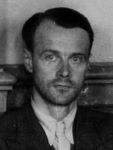 Hans Bernd von Haeften (born on 18 December 1905 in Berlin, died on 15 August 1944 in Berlin), German lawyer.
Hans Bernd von Haeften (born on 18 December 1905 in Berlin, died on 15 August 1944 in Berlin), German lawyer.
Hans Bernd von Haeften grew up with his older sister Elisabeth and his younger brother Werner in Berlin. von Haeften attended his confirmation teachings with siblings Sabine and Dietrich Bonhoffer. He remained in contact with them until his death.
From Autumn 1924, he studied law in Berlin and Munich, and in the semester of 1928/1929 he went on a student exchange in Cambridge. Even as a student he had become aware of the danger of Nazism. In 1930, he married Barbara Curtius, daughter of the then minister of foreign affairs of the German Reich. Being the secretary of the Stressmann's Foundation, he was looking forward to a special position in the Ministry. In the same year, he started professional work as an auxiliary worker of the German consulate in Geneva. Just as he was taking his place in the Ministry of Foreign Affairs as a 27-year-old man, Hitler was taking office as the Reich’s Chancellor. Other places associated with the professional career of von Haeften include: Copenhagen, Berlin, Vienna, Bucharest and again Berlin.
When Haeften risked a confrontation with corrupt members of the Nazi party in Vienna, he irritated the Nazis. The Ministry of Foreign Affairs sent him to Bucharest, where his tasks included matters related to the German minority. At that time, there were numerous disputes between German parties in Transylvania. Haeften counteracted the difficult situation in which the Church in Transylvania had found itself when national socialism arrived there from the German-speaking homeland. Both from the inside and the outside, the Church faced great danger. Haeften helped the opposition and common-sense currents in the Church, within the limits that his office allowed him.
During the war, he was brought back to Berlin where he was the deputy head of the information department of the Ministry of Foreign Affairs. Here he once again met Adam von Trott, whom he had become acquainted with in 1933 during his studies in Oxford, and who introduced him to Helmuth James von Moltke. A close friendship developed between the two.
Due to his exposed position, Haeften did not take part in the three meetings which took place in Krzyżowa. However, his brother Werner went in his place, Werner had become adjutant to Stauffenberg after being severely wounded on the front. Unlike his brother, Haeften, however, argued against the attack of the senior military officers on Hitler, he would rather see the leader of the Reich tried before a court.
Haeften stood before the People’s Court on 15 August 1944. On the same day, the death sentence was announced and he was executed in Berlin-Plötzensee.
Three days before his death he baptised his fifth child, daughter Ulrike.
THEODOR HAUBACH

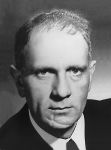 Theodor Haubach
Theodor Haubach
(born on 15 September 1896 in Frankfurt am Main, died on 23 January 1945 in Berlin) – German journalist and politician.
Theodor Haubach was born as the son of a salesman in Frankfurt am Main. He lost his father when he was one year old and grew up mainly under the care of his mother, who was Jewish. In his school time, which he spent in Darmstadt, he was friends with Carlo Mierendorff. This relationship remained close also later on in his life due to their similarity of political opinions.
After the end of World War I, in which he had fought as a soldier, he became involved in various poetic initiatives. He studied in Heidelberg, Munich and Frankfurt am Main. Together with Mierendorff he published a magazine called ”Die Dachstube“. He defended his doctoral dissertation, which he wrote under the supervision of a well-known philosopher - Karl Jaspers, in 1923, at the University of Heidelberg. Then he moved to Hamburg, where he became an editor of one of the newspapers that was influential in social democratic circles. In the year 1927, he was elected into the Municipal Council. He was an active member of the republican Association for the Protection of the Black, Red and Gold Banner of the Reich (Reichsbanner Schwarz-Rot-Gold) from the moment of its foundation. In 1929 he became press secretary to Carl Severing, the Minister of the Interior Affairs of the Reich, and in 1930 to Albert Grzezinski, Berlin Police President.
Between the years 1930 and 1933 Theodor Haubach cooperated intensively with socialist circles, the believing Protestants gathered around Paul Tillich, and with the editors of the journal ”Neue Blätterfür den Sozialismus“. He owed his political and social activities partly to his mother who lived with him and took care of his home as she herself was never married, even until her death in 1939. After the national socialists took power, Theodor Haubach was arrested for a short time.
After he was released from prison, he tried to influence the maintenance of contacts between trade unions, state railway workers and SPD. Again, he was arrested on 24 November 1938 and imprisoned in a concentration camp in Esterwegen for two years. After he was released, he earned his living as a sales representative and insurance agent. In Autumn 1942, he took part in the second of the major congresses of the Kreisau Circle. Initially he opposed the assassination of Hitler, but later on became more closely associated with the circles actively cooperating with the assassin, Carl von Stauffenberg. In these circles, he was perceived by other conspirators as a potential government’s spokesman. After the failed coup d’ etat on 20 July 1944, he managed to get through to southern Germany. Then, however, he decided to return to Berlin, where he was detained by the Gestapo.
On 15 January, the Nazi People’s Court (Volksgerichtshof) sentenced Theodor Haubach to death. The sentence was carried out on 23 January 1945 in Berlin-Plötzensee.
PAULUS VAN HUSEN

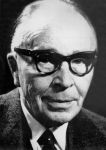 Paulus van Husen
Paulus van Husen (born on 26 February 1891 in Horst [currently the Werne district], died on 1 September 1971 in Münster), German lawyer.
Paulus van Husen received a strict Catholic upbringing in the family of a doctor coming originally from Westphalia. After passing the state examination in law, he served in the army and worked briefly as a law trainee, until 1918 he fought as a soldier during World War I. He studied in Munich, Oxford and Geneva. In the year 1920, he arrived in Silesia, taking up the post of a probationary government officer, and then deputy district councillor. There, he met Hans Lukaschek.
As chief policy officer for the regional commissioner in Opole, Paulus van Husen gained an insight into the Polish-German relations. Within a short time he had become one of the leading politicians in the Centre Party in Silesia. Between 1934 and 1940 he worked as a senior administrative court councillor at the Prussian Higher Administrative Court in Berlin. However, as he refused to join the National Socialist Party (NSDAP), he was denied promotion. From 1940 on he was cavalry captain with the Armed Forces Operations Staff in the Armed Forces High Command in Berlin. That same year he started regular cooperation with Helmuth James von Moltke and Peter Yorck von Wartenburg.
In the Kreisau Circle, van Husen took on the task of establishing firm links with Catholic Church circles. He took part in the third meeting in Krzyżowa. He was also associated with the conspirators who planned the assassination attempt on Hitler and in the case of success, he was to become the state secretary in the ministry of interior affairs. The outrage with the way the Jewish communities were treated was one of the main reasons for which he had joined the anti-fascist opposition
After the assassination attempt on Hitler, which took place on 20 July 1944, van Husen was arrested and held in custody for a lengthy period – on 19 April 1945 - he and his friend Hans Lukaschek were brought before the Nazi "People's Court". He was sentenced to three years of imprisonment in a tough penitentiary. One week later, on 25 April 1945, the soviet troops freed him from the penitentiary in Berlin-Plötzensee. In the same year 1945 Paulus van Husen became one of the founding members of the Christian Democratic Union of Germany (CDU) in Berlin. Between the years 1949 and 1959, he was president of the Higher Administrative Court and the Constitutional Court of North Rhine-Westphalia.
WILHELM LEUSCHNER

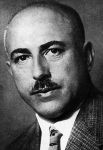 Wilhelm Leuschner
Wilhelm Leuschner (born on 15 June 1890 in Bayreuth, died on 29 September 1944 in Berlin) – German trade union activist and politician of the Social Democratic Party (SPD), involved in coup d’etat on 20 July 1944.
Wilhelm Leuschner was born into an artisan family in Bavaria and grew up under difficult conditions. A sculptor by profession, in 1908 he joined the SPD. Between the years 1909 and 1910 he studied at the Academy of Fine Arts in Nuremberg. He also worked in the furniture industry. He took part in World War I. Later on he became secretary of the trade union in Darmstadt and until the year 1926 was the head of the Hessian local structures of the social youth organisation, i.e. Sozialistische Arbeiter-Jugend (SAJ). In the meantime, he married Elisabeth Baatz, with whom he had two children.
From 1922 to 1925, he served as chairman of the local SPD board in Darmstadt. In the year 1924, he was elected for the first time to the Hessian representative assembly. Until the year 1928, he served as vice chairman there. On top of this, he was a member of the Municipal Council as well as member of the provincial representative assembly in Starkenburg. In 1928 he became minister of interior affairs of the Hessian government. He was one of the most influential politicians and leaders of trade unions at the time of the Weimar Republic.
After Adolf Hitler rose to power, Leuschner resigned from his post. His close collaborators included Carlo Mierendorff and Ludwig Schwamb. On 2 May 1933 Leuschner was arrested by SA members in Berlin after having previously been beaten.
Being deputy of the United Trade Unions in Germany at that time (Allgemeinen Deutschen Gewerkschaftsbund – ADGB), in June 1933 Leuschner was forced to accompany Robert Ley at the congress of the International Labour Organisation in Geneva. However, Leuschner officially distanced himself from the national socialist trade union Deutsche Arbeitsfront, managed by Ley. Already on his way back from Geneva he was arrested and kept in the concentration camp in Lichtenburg until June 1934. After his release, he remained under police control.
Until the year 1944, he earned his living running a company producing taps for beer barrels. Other former social democratic activists found employment in his company, i.e.: Hermann Maaß, Ernst Schneppenhorst and Friedrich Ebert junior. At that time Leuschner was in contact with Julius Leber, and through Dietrich Bonhoeffer – also with the bourgeois opposition. After the outbreak of war in September 1939, he was arrested. After the year 1939, he maintained intensive contact with the later Kreisau Circle, to which he was introduced by Adolf Reichwein in the year 1941. He did not take part in any of the congresses in Krzyżowa and distanced himself from the group later on because of a dispute regarding the issue of trade unions.
Due to his involvement in the preparations for coup d’etat of 20 July 1944, Leuschner was arrested on 16 August 1944 and imprisoned in the concentration camp in Ravensbrück. Later on he was interrogated at the SS Police School in Drögen. This was a Gestapo headquarters which was prepared for conducting interrogations by means of torture. On 8 September 1944, the People's Court sentenced him to death. The sentence on Wilhelm Leuschner was carried out on 29 September 1944 in Berlin-Plötzensee.
CARLO MIERENDORFF

 Carlo Mierendorff, properly Carl Mierendorff (born on 24 March 1897 in Großenhain, died on 4 December 1943 in Leipzig) – German politician (SPD), sociologist and economist.
Carlo Mierendorff, properly Carl Mierendorff (born on 24 March 1897 in Großenhain, died on 4 December 1943 in Leipzig) – German politician (SPD), sociologist and economist.
Carlo Mierendorff was the son of a textile wholesaler in Saxony. When he was 10 years old, he moved with his family to Darmstadt where he was active in the youth movement ”Wandervogel” (Wandering Bird). During World War I, he was a volunteer and after the war - from 1918 to 1922 – he studied philosophy and economics. He was a student of universities in Heidelberg, Freiburg and Frankfurt am Main. In 1923, he defended his doctoral thesis devoted to the economic policy of KPD. In 1920 he joined the SPD. Because of his above-average commitment and reliability, he was chosen to head the Press Office in 1929. He also became a close collaborator of Wilhelm Leuschner, the Hessian minister of interior affairs. In the year 1930, he was elected a member of the Reichstag. Even before 1933 Carlo Mierendorff was considered a fierce opponent of Joseph Goebbels and NSDAP. Earlier, in 1931, he had managed to draw public attention to the so-called Boxheimer Dokumente - the plans to build a nationalist state.
In 1933, despite many warnings from friends, Mierendorff returned to Germany from his tour of Switzerland. At that time he was arrested, tortured and until the year 1938, he was kept in a concentration camp. After his release, he managed to establish contacts with opposition. Just like his friend Theodor Haubach – he became involved with the Kreisau Circle. In this group, Mierendorff strongly influenced the course of social-political discussions. He also managed to tone down opposing Catholic and socialist worldviews, despite not attending any of the major congresses in Krzyżowa. In June 1943 he drafted a call for ”Sozialistische Aktion” – a type of coalition resistance movement. These ambitious plans were thwarted by his premature death. Carlo Mierendorff died on 4 December 1943 in Leipzig during one of the bombing raids.
FREYA VON MOLTKE

 Freya von Moltke (born on 29 March 1911 in Cologne, died on 1 January 2010 in Norwich, Vermont, USA) – German lawyer, wife of the founder of the Kreisau Circle – Helmuth James von Moltke.
Freya von Moltke (born on 29 March 1911 in Cologne, died on 1 January 2010 in Norwich, Vermont, USA) – German lawyer, wife of the founder of the Kreisau Circle – Helmuth James von Moltke.
Freya von Moltke, daughter of Carl Theodor Deichmann and his wife Aday, grew up in Cologne. On her mother’s advice, after graduating from secondary school she attended first the agricultural school for women, and then, having passed the secondary-school leaving examination, she decided to study law. She completed these studies with the defence of her doctoral dissertation. In 1929, she was introduced to Helmuth James von Moltke, whom she married in 1931. Their first son Helmuth Caspar was born in 1937, and their second son Konrad in 1941.
During the absence of her husband, Freya managed the estate in Krzyżowa. In the regularly sent correspondence Helmuth informed her about his contacts and talks. Freya was her husband's most trusted partner and regularly took part in meetings and discussion in Krzyżowa and Berlin. She hosted and took minutes of the meetings in Krzyżowa. She saved many source documents produced by the group, which she hid in beehives in Krzyżowa. The Gestapo did not learn about her participation in the conspiracy. As opposed to her husband, whose release from prison she unsuccessfully tried to obtain, she was able to survive until the end of the war.
From 1947 to 1956, she was involved in social work. With her two sons she first lived in the Republic of South Africa, the homeland of her late mother-in-law. In 1960 she moved to Norwich (Vermont, USA) to the cultural philosopher, Eugen Rosenstock-Huessy. Rosenstock-Huessy had earlier, during her husband's youth, strongly influenced Helmuth James von Moltke. She was committed to preserving the heritage of the Kreisau Circle and to transforming her former property into an international meeting centre. She was honorary president of the “Krzyżowa” Foundation, which she visited for the last time in 2004.
In 1999, she received the International Bridge Award of the City of Zgorzelec/Görlitz and in 2009 the Adam Mickiewicz Prize, awarded by the Committee for the Promotion of French-German-Polish Cooperation (Weimar Triangle) for her special contribution to reconciliation and European cooperation. She died in 2010.
HELMUTH JAMES VON MOLTKE

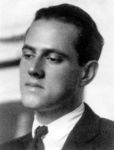 Helmuth James von Moltke
Helmuth James von Moltke
(born on 11 March 1907 in Krzyżowa, died on 23 January 1945 in Berlin) – German military lawyer, founder of the Kreisau Circle.
Helmuth James von Moltke was born in Krzyżowa in 1907 as the oldest of the five children of Count Helmuth von Moltke and his wife Dorothy.
Moltke was brought up in a liberal and pro-social spirit. He attended the gymnasium in Świdnica, studied law and political sciences in Wrocław, Berlin and Vienna. After his studies, he was one of the founders of the Silesian summer work camp movement in Lwówek Śląski. The purpose of this socio-political movement, which developed in the economically backward region of Walbrzych, was to establish contacts between different social groups (young workers, peasants and students).
In the summer of 1929, at the house of the Schwarzwald family, by the Grundlsee lake in Salzkammergut, Moltke met his future wife – Freya Deichmann, the daughter of a banker from Cologne, for the first time. In the same year, Moltke passed his legal trainee exams in Wrocław. In October 1931 Helmuth married Freya Deichmann. Together they had two sons: Konrad and Helmuth Caspar.
In 1932 the Moltke family moved to Berlin. In 1934 Helmuth James passed his exam for associate judge. Moltke specialised in international law. As an attorney he supported Jews and other victims of the regime, whom he helped to leave Germany.
After the war broke out Moltke was drafted as a foreign affairs councillor in the Military Intelligence Service in Berlin. As an expert in the field of international law, he demanded the application of the applicable regulations regarding the humanitarian treatment of war prisoners and that deportations and pacifications as well as shooting of hostages come to an end.
In 1940 he met Peter Yorck and, from then on, their intensive cooperation which gave rise to the Kreisau Circle continued. Moltke, being himself a Protestant, established contact with Protestant and Catholic church leaders and tried to involve the leaders of the social democratic opposition in the works of the Kreisau Circle. Furthermore, during his numerous foreign journeys, he managed to conduct talks with representatives of resistance movements in occupied countries.
In November 1943, when his apartment was bombed, Moltke moved to the Yorck family on Hortensienstrasse. On 19 January 1944,Moltke was arrested for warning his friend, Otton Kiep, about his impending arrest. Moltke’s involvement in opposition activities only came to light after the failed assassination attempt on Hitler, of 20 July 1944.
On 11 January 1945, the People's Court sentenced Helmuth von Moltke to death and on 23 January 1945, the sentence was executed in the Berlin-Plötzensee prison.
HANS CARL PETERS

 Hans Carl Peters
Hans Carl Peters
(born on 5 September 1896 in Berlin, died on 16 January 1966 in Cologne) – lawyer, political scientist, co-founder of the Christian Democratic Party (CDU), rector of the university in Cologne.
Hans Peters was born into the family of a senior administration official firmly rooted in the Catholic faith. He studied natural sciences, law and political sciences. From 1923 onwards, he was a member of the Centre party. After his habilitation, between the years 1925 and 1928, in addition to his work in administration, he taught at the Wrocław University. He then received a job offer from Carl Heinrich Becker, the Prussian minister of culture, who wanted to keep him in his ministry. Soon Peters was promoted to general adviser for universities; he also became a lecturer at the Berlin University. In 1933, he was elected a member of the board of the Joseph Görres Association, a Catholic Institution for the Promotion of Science. This institution rejected the world view and leadership ambitions represented by the National Socialist regime.
In 1932, after the so called Prussian coup, Hans Peters represented the Prussian government against Franz von Papenen before the State Tribunal. After power was taken by national socialists, Hans Peters maintained contact with his political friends from the Centre Party, in particular, he became closer to collaborators of Bernhard Letterhaus, Jakob Kaiser and Josef Wirmer. From 1940 he established intensive contact with Helmuth James von Moltke and Peter Yorck von Wartenburg. From 1941 onwards, in the Kreisau Circle he was regarded as specialist in culture and higher educational institutions. Hans Peters took part in the first and second congresses in Krzyżowa, and also attended numerous meetings of resistance movement members. He also maintained regular contact with the Bishop of Berlin – Preysing. As an associate of the Air Force Headquarters Staff in Berlin, Peters had the opportunity to establish contact with other groups of Berlin oppositionists, above all, those around Ernst von Harnack and Ruth Friedrich - working to help the Jews. Despite the fact that Peters belonged to the core group of members of the Kreisau Circle, after the failed assassination attempt of 20 July 1944, his contact with the group remained undetected by the Gestapo. He managed to survive the war He was one of the founding members of the Christian Democratic Party (CDU). During the years of 1964 and 1965 he held the function of Rector of the University in Cologne.
HARALD POELCHAU

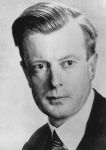 Harald Poelchau
Harald Poelchau
(born on 5 October 1903 in Potsdam, died on 29 April 1972 in Berlin) – German clergyman from Silesia, theologian.
Harald Poelchau was born into the family of a Potsdam pastor. In the year 1922, he began his studies at the Protestant Higher School in Bethel. Later on, he studied at universities in Tübingen and Marburg. Then he studied social welfare at one of the German private higher schools. In April 1928 he married Dorothee Ziegele. They had one son. After two years of holding the function of managing director of the German Union for Juvenile Courts and Legal Aid for Juveniles, he defended his doctoral dissertation in 1931 under the supervision of Paul Tillich – the leading representative of religious socialism. From late 1932, Harald Poelchau made efforts to be appointed prison chaplain in Berlin. In April 1933 he was the first clergyman employed by the National Socialist regime in a prison. As a prison service employee he soon became an important support for victims of the National Socialist machine of violence. Hundreds of prisoners sentenced to death were accompanied by him on their way to their place of execution. His wife was also an opponent of the Nazi regime and supported Poelchau's work on behalf of the persecuted. From the year 1941 onwards, he belonged to the group of opposition activists gathered around Helmuth James von Moltke. He also took part in the first congress in Krzyżowa. After the failed assassination attempt of 20 July 1944, he managed to deliver the last messages from imprisoned oppositionists to many family members of conspirators. As he was not uncovered by the Gestapo, Poelchau was able to survive the war.
After the war ended, Harald Poelchau helped to rebuild the administration of the justice in the Soviet occupation zone for a while, but soon left for the West completely disillusioned. He became the first Evangelical chaplain of workers’ circles in Berlin-Brandenburg. Together with Franz von Hammerstein, he initiated the opening of the educational site for the youth called “Haus Kreisau” (the Kreisau House) in Berlin. For his involvement in the activities of the Onkel Emil group which helped Jews survive in Berlin during World War I, shortly before her death, he was considered one of the Righteous Among the Nations. He died in 1972 in Berlin.
ADOLF REICHWEIN

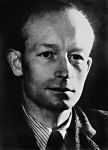 Adolf Reichwein
Adolf Reichwein (born on 3 October 1898 in Ems, died on 20 October 1944 in Berlin) – educator, cultural politician, professor of history.
Adolf Reichwein’s father was a teacher in the primary school. Even as a young man Reichwein got involved in activities of the youth movement called “Wandervogel” (Wandering bird). Before his secondary-school leaving examination, he volunteered for the army during World War I and was severely injured in combat. After the war had come to an end, he worked with great energy towards the expansion of people's universities, educational systems for adults and further teacher training. He studied in Frankfurt am Main and Marburg. He was a trusted collaborator of Carl Heinrich Becker, the Prussian minister of culture. In 1930, Reichwein was appointed to the post of professor of history and civic awareness in the newly opened Paedagogical University in Halle. In the same year he became a member of the Social Democratic Party of Germany (SPD). For political reasons, he was dismissed from his position as professor on 24 April 1933. This happened shortly after his wedding with a teacher and colleague from work - Rosemarie Pallat. Together they had four children.
In the following years Rechwein earned his living working as a village teacher in Tiefensee near Berlin, and then as head of the educational department at the State Ethnographic Museum in Berlin. He had known Helmuth James von Moltke for 20 years. From 1940 onwards, he regularly contacted the resistance movement around him and also Peter Yorck von Wartenburg. Reichwein took part in the first and third congresses in Krzyżowa. He was also closely associated with the activities of Julius Leber and Wilhelm Leuschner. In the summer of 1944, he maintained contact with the military opposition. On 22 June 1944, together with Julius Leber, he met with communist oppositionists: Anton Saefkow and Franz Jacob. As the meeting was under surveillance by a Gestapo spy, a series of arrests took place in early July 1944. Also Julius Leber and Adolf Reichwein were arrested at that time. On 20 October 1944, the Nazi People's Court sentenced Reichwein to death. The sentence was executed on the same day in Berlin-Plötzensee.
AUGUSTIN RÖSCH

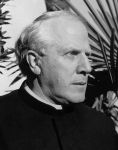 Augustin Rösch
Augustin Rösch (born on 11 May 1893 in Schwandorf, died on 7 November 1961 in Munich) – Jesuit provincial.
Augustin Rösch grew up in a Catholic family and joined the Jesuit order at the age of 18. In 1925 he was ordained a priest. In 1928 he became the prefect general and then rector of Stella Matutina, the Jesuit school in Feldkirch. In 1935 he was elected a Provincial of the Jesuits’ Upper German Province. The persecution of the Jesuits by the National Socialists caused Augustin Rӧsch serious problems. He repeatedly stood up to the authorities for his fellow Jesuits and in defence of church rights.
In 1941 Augustin Rösch was introduced to Helmuth James von Moltke and took part in the first congress in Krzyżowa in 1942. He also introduced another Jesuit - Alfred Delp - into the Kreisau Circle, who, as an educator at the Jesuit school was directly subordinated to him. Moltke expected that both Rӧsch and Delp would contribute to overcoming religious differences within the group. He was anxious to make sure that the plans of the new, post-Nazi order in Germany would be based on Christian values. Within the Kreisau Circle, Rösch had an impact on the ways in which many religious and cultural-political dilemmas were solved. He also gave lots of practical advice on how to behave during arrest and interrogation. Owing to him, contact was established with many Catholic oppositionists.
To the very end he opposed assassinating Adolf Hitler and was not directly involved in the plot to assassinate Hitler. After the failed assassination attempt of 20 July 1944, Rösch managed to avoid arrest for a long time. From September 1944 onwards, he was a wanted man, but it was not until 11 January 1945 that the Gestapo managed to discover his hiding place, and then the Jesuit was arrested. During the interrogation Augustin Rösch was severely injured, however, he managed to survive till the end of the war. He was kept imprisoned in Berlin on Lehrter Straße, but shortly before the arrival of the Soviet army, on 25 April 1945 Rӧsch, just like some other convicts, he was released. In 1953, he was awarded the Grand Cross of Merit of the Federal Republic of Germany (Großes Verdienstkreuz).
ADAM VON TROTT ZU SOLZ

 Adam von Trott zu Solz (born on 9 August 1909 in Potsdam, died on 26 August 1944 in Berlin) – German lawyer and diplomat.
Adam von Trott zu Solz (born on 9 August 1909 in Potsdam, died on 26 August 1944 in Berlin) – German lawyer and diplomat.
Adam von Trott zu Solz was born on 9 August 1909 in Potsdam. He as the fifth of the eight siblings; he spent his childhood and youth on the family estate of Bebra-Imshausen in Hesse. He studied law in Göttingen, Munich and Berlin, receiving his diploma after defending his paper entitled ”Philosophy of Hegel’s state and international law” in the year 1931. Soon he went to Oxford on a Rhodes Scholarship programme to study philosophy, political and economic sciences. In Great Britain, he established many contacts which would be important for him in the future, including Helmuth James von Moltke.
In 1933 Trott zu Solz returned to Germany, but did not support the Nazis. In a conversation with his English friend, he referred to the fact of their seizing of power as “terrible misfortune for Germany”. Despite his interest in a career as an official, he claimed that “serving the right of the individual” was more important to him than “serving the state”. Between the years 1933 and 1936, he continued his training as a lawyer. Despite official pressure, he refrained from joining the NSDAP or other Nazi organisations. Trott zu Solz established contact with many opponents of the system, in particular, socialist resistance groups.
Between the years 1937 and 1938, taking advantage of the opportunity of receiving the Rhodes Scholarship, he stayed in the U.S. and China for longer periods of time. After his return in 1939, he looked for a job unsuccessfully, however, without giving up on his refusal to join the NSDAP. He renewed and extended his contact with many friends, among others, officers and employees of the Ministry of Foreign Affairs. A few months before the outbreak of the Second World War, Trott zu Solz got involved in England in a plan that was to prevent or delay the war. For this purpose, he was received by the British Prime Minister, Arthur Chamberlain.
On 8 June 1940 Adam von Trott zu Solz married Clarita Tiefenbacher. Together they had two daughters: After his return from the U.S. he decided to take up a job at the Ministry of Foreign Affairs and join the NSDAP. All this served him in the following years as a cover for all kinds of conspiratorial activities. In the years 1940-1944 he worked in the Foreign Office Information Department and from November 1943, as diplomatic attaché. This work gave him the opportunity to take care of discrete regular contact with opponents of Nazism, both in Germany and abroad, including the groups of Hans von Dohnanyi and Dietrich Bonhoeffer, and in the office of foreign affairs and the defence of the Wehrmacht Chief Command.
From 1941 Trott zu Solz belonged to the inner circle of the Kreisau Circle. As an employee of the Ministry of Foreign Affairs, above all, as the head of the India Department, he had the opportunity to take official trips to occupied or neutral countries, where he sought possibilities to establish contact with the Allies. As political spokesman of the Circle, he also tried, in addition to recognition of the German resistance groups, to obtain consent for not using Germany for military purposes in the future. The aims of the war as clearly defined by him, the unconditional capitulation of Germany as well as cooperation with representatives of the German resistance movement, were, however, rejected by the Allies. In June 1943, during the third major meeting of the Kreisau Circle, discussions regarding the future foreign policy of Germany as well as the new economic order and punishment of Nazi criminals were held under his leadership.
As an advocate of the attack on Hitler, Trott zu Solz became involved in 1944 in the plot aimed at overthrowing him. In the case of success, he was envisaged as negotiator with the Western Allies. Through intermediaries, he informed the Americans and the British about the impending coup attempt and also tried to establish contacts within the Soviet Union, including the subsequent German Chancellor - Willi Brandt who was staying in Sweden. However, these attempts were futile.
On 25 July, after the failed assassination attempt on Hitler, links of Trott zu Solz with Stauffenberg came to light and he was arrested. On 15 August, the People's Court sentenced him to death. Adam von Trott zu Solz was executed on 26 August in the Berlin-Plötzensee prison.
THEODOR HANS STELTZER

 Theodor Hans Steltzer
Theodor Hans Steltzer (born on 17 December 1885 in Trittau, died on 27 October 1967 in Munich) – officer, after the war - Prime Minister of the British Occupation government in Schleswig-Holstein.
Theodor Steltzer came from a bourgeois family from Schleswig-Holstein. While studying political and economic sciences in Munich, he was further involved in the movement for the further education of workers. During World War I, he served as a soldier, and then from 1920, he was the district councillor in Rendsburg. Since he had openly declared himself as an opponent of National Socialism, he lost his job in the Spring of 1933. The new authorities tried to discredit him by accusing him of alleged financial irregularities. He was also charged with high treason, as he had criticised the policies of the National-Socialist regime in one of his letters sent to the Austrian government. For this reason, he was even imprisoned for several months. However, in the end, he was pardoned.
In 1936 Theodor Steltzer became head of the secretariat of the Protestant brotherhood of St. Michael from Marburg. In the year 1939, Germany invaded Poland, he was called up for service in the Wehrmacht. From September 1939 on, he was the chief of staff of railway transport in occupied Poland. From 1940 onwards he served as colonel at the General Staff of the Wehrmacht main headquarters in Oslo, Norway. At that time he maintained regular contact with the Norwegian resistance movement
In 1940, through Otto Heinrich von der Gablentz, he met Count Helmuth James von Moltke and joined the Kreisau Circle. As a result, he took part in both Krzyżowa congresses in 1942. He was also involved in the plot to assassinate Hitler. After the failed assassination attempt on 20 July 1944, Steltzer, who, according to the conspirators was designated to be the government administrator of Schleswig-Holstein, was summoned to Berlin on official business. There, he was arrested by the Gestapo.
On 15 January 1945, the People's Court sentenced him to death. He was saved by Norwegian oppositionists who found a way to reach Himmler, who ordered the suspension of the execution. On 25 April 1945, just before the arrival of the Soviet army, Steltzer was released from the prison located in Berlin at Lehrter Straße. After the war Steltzer was a founding member of the Christian Democratic Party (CDU) in Berlin. Between the years 1945 and 1947, he was the regional commissioner and then minister president of Schleswig-Holstein. In 1955 he was appointed acting president of the German Association for Foreign Policy in Bonn, and one year later became president of the UNESCO commission. He died in 1967.
CARL DIETRICH VON TROTHA

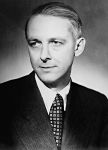 Carl Dietrich von Trotha
Carl Dietrich von Trotha (born on 25 June 1907 in Krzyżowa, died on 28 June 1952 in Fox Lake, Illinois, USA) – German lawyer and economist of Silesian origin, academic teacher after the war.
Carl Dietrich von Trotha was a cousin of Count Helmuth James von Moltke. This son of an officer spent his childhood at the Krzyżowa estate near Świdnica in Lower Silesia. From his early age, Trotha was fascinated by the scouting movement, and the journeys taken to foreign countries helped him understand the necessity of the European agreement. In 1925 Trotha started his legal, economic and social studies. After defending his doctoral dissertation in 1933 and passing the higher civil service examination, he entered public service in the Reich’s Ministry of Economy. He worked on problems related to planning production and supply. At work, he met people who thought similarly to him, for instance, Arvid Harnack. He also maintained contact with his colleague from university – Harro Schulze-Boysen. In the Kreisau Circle, both Trotha and his wife Margarete (née Bartelt), exerted significant impact on the economic and political matters. Together with Horst von Einsiedel, he composed the memorandum entitled: ”Die Gestaltungsaufgaben der Wirtschaft“. Frequently, the meetings of the members of the Kreisau Circle responsible for economic issues were held at Trotha’s apartment in Berlini-Lichterfelde.
Carl Dietrich von Trotha did not take part in the congresses in Krzyżowa. His involvement in the works of the Kreisau Circle was not detected by the Gestapo even after the failed assassination attempt of 20 July 1944. He was able to survive until the end of the war. From the year 1948, to his sudden death as the result of an accident during his stay in the U.S. in 1952, Trotha worked as a lecturer in the German Higher School of Politics in Berlin
MARION YORCK VON WARTENBURG

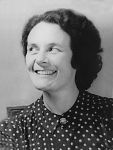 Marion Yorck von Wartenburg
Marion Yorck von Wartenburg (born on 14 June 1904 in Berlin, died on 13 April 2007 in Berlin) – German lawyer, wife of the co-founder of the Kreisau Circle – Peter Yorck von Wartenburg.
Marion Yorck von Wartenburg was brought up in the Winter family, as daughter of a councillor in the Prussian ministry of culture. Initially, she intended to study medicine, however, she quickly switched to law. In 1928, during her stay in one of the Silesian estates, she was introduced to Count Peter Yorck von Wartenburg. At the end of May 1930, after completing her studies and defending the doctoral dissertation, the young couple married.
Initially, they lived in Wrocław, but in 1936, they moved to an apartment on Hortensienstraße in Berlin-Lichterfelde. This place became one of the most important meeting places for the Kreisau Circle. Marion Gräfin Yorck took part in most of the discussions of the Kreisau Circle and was a participant of all three congresses in Krzyżowa. She participated actively in the organisational works of the group. After the assassination attempt on Hitler in 1944, she was arrested, but managed to survive to the end of the war. Having undergone her legal traineeship she worked as a lawyer and judge in Berlin from 1946. She was one of the first women to hold the position of judge in the Higher National Court. She died in Berlin in the year 2007 at the age of 102.
PETER YORCK VON WARTENBURG
 Peter Yorck von Wartenburg
Peter Yorck von Wartenburg (born on 13 November 1904 in Oleśnica Mała in Lower Silesia, died on 8 August 1944 in Berlin) – German lawyer and official of Silesian origin, co-founder of the Kreisau Circle and one of the leaders of the attempt at coup d’ etat of 20 July 1944.
Count Peter Yorck von Wartenburg was born as the fourth child of a Prussian district councillor, coming from the German count family - Yorck von Wartenburg. Between the years 1923 and 1926, he studied law and political sciences – first in Bonn, and then in Wrocław. In 1927, he defended his doctoral dissertation and in 1930 in Berlin, he passed the civil service entrance examination for lawyers. That year he also married a doctor of law sciences - Marion Winter. After a short period of work as a lawyer and legal consultant in the so called Osthilfe government programme for supporting economically endangered German regions, he found a job in the Chief Constable's Office in Wrocław. Then, from 1936 to 1942, he served as a department head responsible for fundamental issues at the Reich's commissioner for shaping prices in Berlin
As a consequence of his refusal to join the NSDAP from 1938 onwards, he was regularly overlooked for promotions. However, at that time he had already been active in the resistance movement. His collaborators from this period were as follows: his personal friend Count Fritz-Dietlof von der Schulenburg and Ulrich-Wilhelm Count von Schwerin von Schwanenfeld. After the massacres of 9 November, he founded a discussion circle dealing with the issues of fundamental rights in the new constitution. As a reserve officer, he was called up for military service at the beginning of the war. In 1942, he was assigned to an administrative post (Wirtschaftsstab Ost), a unit responsible for maximising the economic exploitation of the occupied territories and subordinated to the Armed Forces High Command of the third Reich.
In January 1940, Yorck started to cooperate closely with Count Helmuth James von Moltke. Together, they ran and possibly initiated meetings of the Kreisau Circle. Very frequently, these meetings would be held at Yorck's home situated in Berlin-Lichterfelde. Unlike his friend, Moltke, Yorck supported the idea of a coup d’ etat, which was to precede the assassination attempt on Adolf Hitler. When Count Claus von Stauffenberg was preparing plans for an assassination attempt in Berlin from September 1943, close contact was established with Yorck and he belonged to the closest circle of conspirators.
Designated as secretary of state for a future Reich Chancellor, he was arrested the same evening after the failed coup attempt of 20 July 1944. On 8 August 1944, the People's Court sentenced him to death. The sentence was executed on the same day in Berlin-Plötzensee.








 Otto Heinrich von der Gablentz (born on 11 September 1898 in Berlin, died on 27 April 1972 in Berlin), German political scientist. After the war, professor at Freie Universität Berlin.
Otto Heinrich von der Gablentz (born on 11 September 1898 in Berlin, died on 27 April 1972 in Berlin), German political scientist. After the war, professor at Freie Universität Berlin.
 Eugen Gerstenmaier (born on 25 August 1906 in Kirchheimunter Teck, died on 13 March 1986 in Oberwinter near Remagen) – theologian and politician, after the war, associated with CDU. In the history of the Federal Republic of Germany he was a parliament member who was the longest-serving president of the Bundestag.
Eugen Gerstenmaier (born on 25 August 1906 in Kirchheimunter Teck, died on 13 March 1986 in Oberwinter near Remagen) – theologian and politician, after the war, associated with CDU. In the history of the Federal Republic of Germany he was a parliament member who was the longest-serving president of the Bundestag.
 Hans Bernd von Haeften (born on 18 December 1905 in Berlin, died on 15 August 1944 in Berlin), German lawyer.
Hans Bernd von Haeften (born on 18 December 1905 in Berlin, died on 15 August 1944 in Berlin), German lawyer.
 Theodor Haubach
Theodor Haubach

 Paulus van Husen (born on 26 February 1891 in Horst [currently the Werne district], died on 1 September 1971 in Münster), German lawyer.
Paulus van Husen (born on 26 February 1891 in Horst [currently the Werne district], died on 1 September 1971 in Münster), German lawyer.

 Wilhelm Leuschner (born on 15 June 1890 in Bayreuth, died on 29 September 1944 in Berlin) – German trade union activist and politician of the Social Democratic Party (SPD), involved in coup d’etat on 20 July 1944.
Wilhelm Leuschner (born on 15 June 1890 in Bayreuth, died on 29 September 1944 in Berlin) – German trade union activist and politician of the Social Democratic Party (SPD), involved in coup d’etat on 20 July 1944.

 Carlo Mierendorff, properly Carl Mierendorff (born on 24 March 1897 in Großenhain, died on 4 December 1943 in Leipzig) – German politician (SPD), sociologist and economist.
Carlo Mierendorff, properly Carl Mierendorff (born on 24 March 1897 in Großenhain, died on 4 December 1943 in Leipzig) – German politician (SPD), sociologist and economist.
 Freya von Moltke (born on 29 March 1911 in Cologne, died on 1 January 2010 in Norwich, Vermont, USA) – German lawyer, wife of the founder of the Kreisau Circle – Helmuth James von Moltke.
Freya von Moltke (born on 29 March 1911 in Cologne, died on 1 January 2010 in Norwich, Vermont, USA) – German lawyer, wife of the founder of the Kreisau Circle – Helmuth James von Moltke.
 Helmuth James von Moltke
Helmuth James von Moltke
 Hans Carl Peters
Hans Carl Peters

 Harald Poelchau
Harald Poelchau

 Adolf Reichwein (born on 3 October 1898 in Ems, died on 20 October 1944 in Berlin) – educator, cultural politician, professor of history.
Adolf Reichwein (born on 3 October 1898 in Ems, died on 20 October 1944 in Berlin) – educator, cultural politician, professor of history.

 Augustin Rösch (born on 11 May 1893 in Schwandorf, died on 7 November 1961 in Munich) – Jesuit provincial.
Augustin Rösch (born on 11 May 1893 in Schwandorf, died on 7 November 1961 in Munich) – Jesuit provincial.

 Adam von Trott zu Solz (born on 9 August 1909 in Potsdam, died on 26 August 1944 in Berlin) – German lawyer and diplomat.
Adam von Trott zu Solz (born on 9 August 1909 in Potsdam, died on 26 August 1944 in Berlin) – German lawyer and diplomat.
 Theodor Hans Steltzer (born on 17 December 1885 in Trittau, died on 27 October 1967 in Munich) – officer, after the war - Prime Minister of the British Occupation government in Schleswig-Holstein.
Theodor Hans Steltzer (born on 17 December 1885 in Trittau, died on 27 October 1967 in Munich) – officer, after the war - Prime Minister of the British Occupation government in Schleswig-Holstein.

 Carl Dietrich von Trotha (born on 25 June 1907 in Krzyżowa, died on 28 June 1952 in Fox Lake, Illinois, USA) – German lawyer and economist of Silesian origin, academic teacher after the war.
Carl Dietrich von Trotha (born on 25 June 1907 in Krzyżowa, died on 28 June 1952 in Fox Lake, Illinois, USA) – German lawyer and economist of Silesian origin, academic teacher after the war.

 Marion Yorck von Wartenburg (born on 14 June 1904 in Berlin, died on 13 April 2007 in Berlin) – German lawyer, wife of the co-founder of the Kreisau Circle – Peter Yorck von Wartenburg.
Marion Yorck von Wartenburg (born on 14 June 1904 in Berlin, died on 13 April 2007 in Berlin) – German lawyer, wife of the co-founder of the Kreisau Circle – Peter Yorck von Wartenburg.
 Peter Yorck von Wartenburg (born on 13 November 1904 in Oleśnica Mała in Lower Silesia, died on 8 August 1944 in Berlin) – German lawyer and official of Silesian origin, co-founder of the Kreisau Circle and one of the leaders of the attempt at coup d’ etat of 20 July 1944.
Peter Yorck von Wartenburg (born on 13 November 1904 in Oleśnica Mała in Lower Silesia, died on 8 August 1944 in Berlin) – German lawyer and official of Silesian origin, co-founder of the Kreisau Circle and one of the leaders of the attempt at coup d’ etat of 20 July 1944.